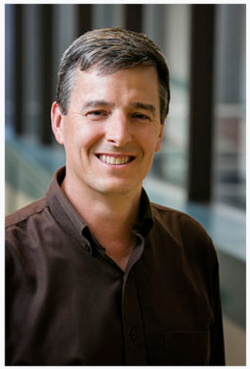 The IPLAC Creator of the Year Award is given to honor the creative achievements, primarily in the Chicago metropolitan area, that are eligible for patent, copyright, or trademark protection. This year, IPLAC is proud to recognize Dr. John Rogers as the winner of the 2025 IPLAC Creator of the Year Award.
The IPLAC Creator of the Year Award is given to honor the creative achievements, primarily in the Chicago metropolitan area, that are eligible for patent, copyright, or trademark protection. This year, IPLAC is proud to recognize Dr. John Rogers as the winner of the 2025 IPLAC Creator of the Year Award.
Dr. John Rogers is a distinguished scientist and innovator specializing in nano-scale fabrication and materials for electronic and photonic devices, with a focus on bio-inspired systems. His research explores ‘soft’ materials like polymers and biological tissues, aiming to induce novel electronic and photonic responses and develop new patterning techniques. His work spans conformal electronics, nanophotonic structures, and bio-integrated technologies, combining expertise from various technical fields.
Dr. Rogers earned his undergraduate degrees in chemistry and physics from the University of Texas, Austin, and his master’s and PhD in physical chemistry from MIT. He was a Junior Fellow at Harvard and later joined Bell Labs, where he led the Condensed Matter Physics Research Department. He then became a Founder Professor of Engineering at the University of Illinois, serving as Director of the NSF NSEC Center on Nanomanufacturing. In 2012, he was appointed to Swanlund Chair at UIUC, and in 2016, he became the first Louis Simpson and Kimberly Querrey Professor at Northwestern University, directing the Center for Bio-Integrated Electronics, later the Institute of Bioelectronics.
Dr. Rogers has published over 900 peer-reviewed scientific papers and holds over 100 patents, with more than 50 licensed or in use. He has trained over 115 PhD students and postdoctoral fellows, many of whom now hold faculty positions at prestigious institutions worldwide. He is one of the few individuals elected to all three US national academies. His inventions are utilized by companies he co-founded, including Active Impulse Systems, Semprius, MC10, CoolEdge, XCeleprint, and Transient Electronics.
